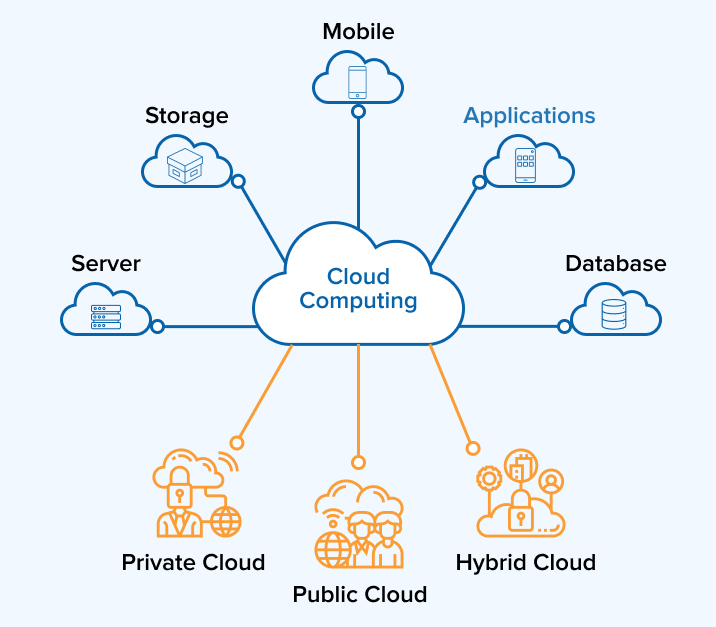LinkDaddy Cloud Services Decoded: Insider Insights into Universal Cloud Service Advancements
Wiki Article
Simplify Your Infrastructure With Cloud Provider
As organizations navigate the ever-evolving landscape of innovation and data management, the role of cloud services in streamlining infrastructure has become significantly popular. How can organizations properly browse this shift and absolutely unlock the capacity of cloud services for simplifying their infrastructure?Advantages of Cloud Services
Cloud services provide a streamlined method to handling IT facilities, offering services with flexibility, scalability, and cost-efficiency. One of the vital benefits of cloud services is the scalability they use.In addition, cloud solutions eliminate the demand for organizations to purchase pricey hardware and software application. This cost-efficiency is a significant advantage, especially for little to medium-sized ventures seeking to minimize upfront expenses. By utilizing cloud solutions, organizations can access high-grade IT resources without the large price connected with typical framework configurations.
Moreover, cloud solutions give organizations with the flexibility to access their data and applications from anywhere with a net connection. This degree of availability improves collaboration amongst groups, enables remote job, and increases total efficiency. The versatility supplied by cloud solutions encourages companies to adjust swiftly to transforming market conditions and client demands.
Expense Financial Savings and Scalability
In enhancement to the operational advantages highlighted earlier, the combination of cloud solutions into a firm's infrastructure brings forth substantial expense savings and boosted scalability. Cloud solutions offer a pay-as-you-go version, allowing businesses to range sources up or down based on existing requirements, consequently staying clear of the expenses linked with keeping excess ability. This adaptability allows business to adjust swiftly to changing demands without incurring unnecessary expenditures.Furthermore, cloud services remove the demand for upfront financial investments in software and hardware, minimizing capital investment. Operating expenses are likewise minimized as business no longer need to handle and maintain physical web servers, causing reduced power intake and IT staffing costs. Furthermore, cloud solutions supply automated updates and upkeep, ensuring that the framework continues to be secure and current without needing hands-on interventions.
Enhanced Safety Procedures
When incorporating cloud solutions into a business's infrastructure to make sure and protect delicate data compliance with market regulations,Applying rigorous safety procedures is extremely important. Cloud provider use improved protection features such as information file encryption, firewall program security, and multi-factor authentication to alleviate cybersecurity dangers. Encryption helps safeguard information both at remainder and in transportation, ensuring that just authorized users can access sensitive info. Firewall softwares function as a barrier in between interior networks and exterior hazards, tracking and regulating outgoing and inbound network web traffic. Multi-factor verification includes an extra layer of protection by calling for individuals to provide several kinds of verification before accessing the cloud solutions.Furthermore, normal protection audits and conformity analyses aid ensure and identify vulnerabilities adherence to industry criteria. Firms can additionally gain from features like automated security updates and real-time hazard tracking given by cloud provider. By prioritizing safety and security actions and staying proactive in dealing with prospective dangers, services can confidently utilize cloud solutions while securing their valuable information from unauthorized access or violations.
Transitioning to Cloud Facilities
To efficiently incorporate cloud services right into a company's facilities, a structured approach that deals with the shift towards cloud-based remedies is imperative. Transitioning to cloud framework includes cautious preparation and execution to make sure a smooth movement process. The very first step is to assess the current infrastructure and establish which applications and systems are ideal for migration to the cloud. This evaluation must consider factors such as data sensitivity, compliance needs, and performance needs.As soon as the evaluation is full, a migration method must be established. find out here now This strategy ought to describe try these out the timeline, sources, and duties for moving each part to the cloud. It is necessary to communicate this strategy clearly to all stakeholders to ensure positioning and minimize disruptions throughout the transition.
During the migration procedure, testing and monitoring are important to identify and address any concerns immediately. Normal checkpoints must be developed to track development and make needed changes. Furthermore, training for employees on making use of cloud services should be supplied to make certain a successful shift and optimize the advantages of the new framework.
Best Practices for Cloud Fostering
Successful adoption of cloud solutions rests on the tactical placement of organization purposes with technological abilities and organizational preparedness. To make certain a smooth transition to the cloud, companies ought to begin by carrying out a comprehensive assessment of their present facilities and recognizing which work are best fit for cloud movement. It is critical to involve crucial stakeholders from different departments in the decision-making procedure to gain buy-in and deal with any type of worries beforehand.An additional ideal technique for cloud adoption is to prioritize security and compliance. Organizations must carefully assess the protection steps offered by cloud provider and make certain that their data is secured according to industry standards and governing requirements. Carrying out durable information encryption, accessibility controls, and routine safety and security audits can aid reduce threats connected with cloud adoption.

Conclusion

As companies browse the ever-evolving landscape of modern technology and information monitoring, the function of cloud services in simplifying framework has come to be significantly noticeable - Cloud Services. Exactly how can companies effectively navigate this change and really unlock the capacity of cloud services for simplifying their facilities?
Cloud solutions offer a streamlined method to managing IT facilities, providing organizations with cost-efficiency, adaptability, and scalability. By utilizing cloud solutions, services can access top quality IT sources without the large cost tag associated with standard framework arrangements.
To ensure a smooth transition to the cloud, organizations should begin by performing an extensive assessment of their present infrastructure and identifying which work are best fit for cloud movement.
Report this wiki page